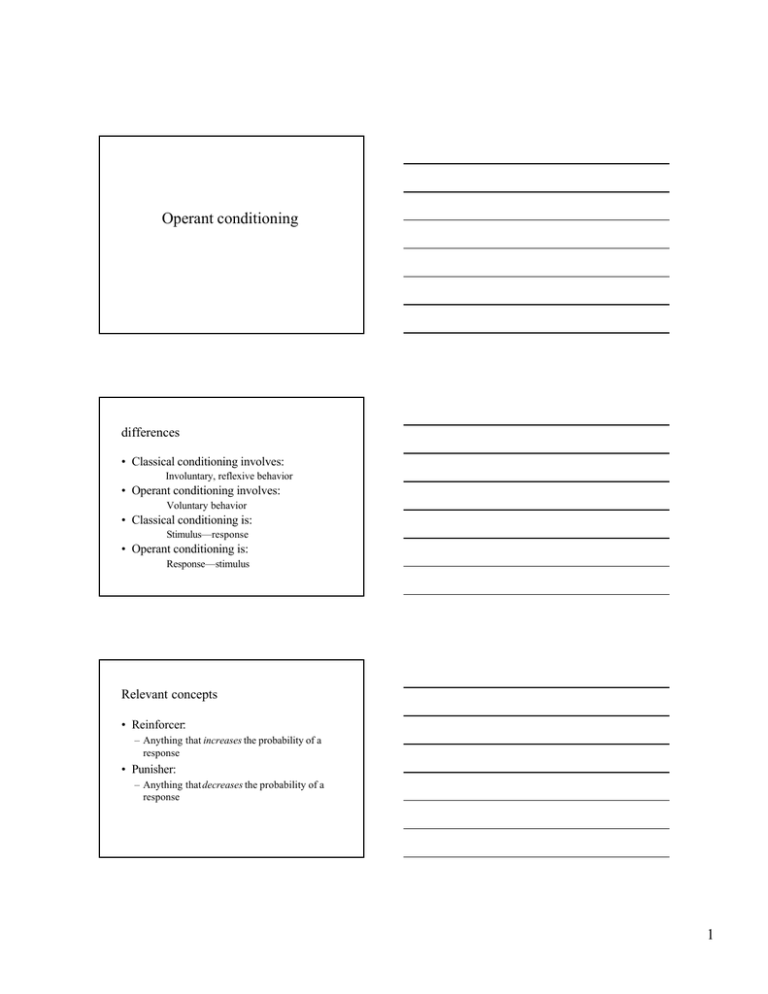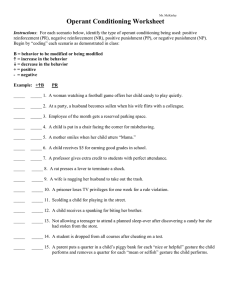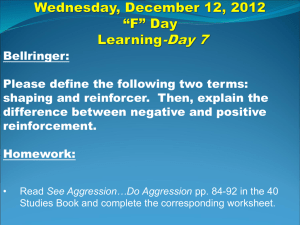Operant conditioning differences
advertisement

Operant conditioning differences • Classical conditioning involves: Involuntary, reflexive behavior • Operant conditioning involves: Voluntary behavior • Classical conditioning is: Stimulus—response • Operant conditioning is: Response—stimulus Relevant concepts • Reinforcer: – Anything that increases the probability of a response • Punisher: – Anything that decreases the probability of a response 1 direction of the reinforcer • Positive reinforcement – Applying a stimulus to increase the probability of a response • Negative reinforcement – Removing a stimulus to increase the probability of a response examples • Giving a dog a bone when she sits • Stop nagging when the child cleans her/his room • Taking an aspirin to get rid of a headache • The loud buzzer stops when the pigeon pecks the lever • A food pellet drops when the pigeon pecks the lever Schedule of reinforcements • Ratio: reinforcement is applied based on numbers of responses – Continuous reinforcement: a ratio schedule of reinforcement in which every response is reinforced – Fixed ratio – Variable ratio 2 Schedules of reinforcement • Interval: reinforcement is applied based on elapsed time • Fixed interval • Variable interval More relevant concepts • Shaping: – uses the method of successive approximations • Premack principle: – reinforcing a low probability behavior with a high probability behavior • Time out: – a form of extinction • Response cost: – a form of negative punishment punishment • In order to be effective, punishment – Must be applied immediately – Must be applied at maximum intensity 3











